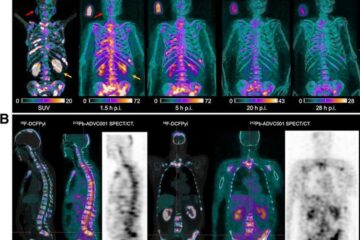Researchers & bakers combine to plug mineral gap in UK soil linked to fertility & cancer

A consortium of researchers, farmers and a major baker are working together to fill future supermarket shelves with loaves of bread that will arrest the plummeting levels in the UK diet of a mineral that plays a significant role in male fertility and the prevention of some cancers.
The mineral selenium is of particular importance to men with its role in male fertility and in the prevention of prostate cancer but research has also shown that it can help in the prevention of cardiovascular disease, stimulation of immune function, suppression of inflammatory conditions, and even brain function and development.
The UK’s Food Standards Agency recommends that the daily intake for this key mineral should be 60 to 75 microgrammes per person per day – but UK soils contain low levels of selenium. The average selenium intake in the UK is not only far below that figure but has actually steadily declined between 1986 and 1995 as the proportion of home grown grain used in British bread has increased. Currently the average intake of selenium in Britain stands at just 39 microgrammes a day per person. In 2000 the UK ranked second last in a table of 11 European countries for selenium intake.
Researchers at University of Warwick’s horticultural research arm Warwick HRI have been modelling selenium intake of plants and have carried out a number of field trials to gain a clear understanding of the effectiveness of selenium enhanced fertilisers on the selenium uptake of a number of grains and vegetables. They have gained significant insights into the competition between sulphur and selenium in plants and how several transport proteins interact with both those minerals, and their field trials can now give farmers and growers a much clearer picture of the increased selenium uptake they can expect if using particular selenium enhanced fertilisers. For grain they were able to see a consistent 4 fold increase in selenium uptake.
Consumers and growers will soon literally reap real benefits from this research. The Warwick HRI researchers led by Professor Philip White have now brought together a consortium of University of Warwick researchers, farmers, a fertiliser manufacturer and a major UK baker to develop and market British grain based bread products with enhanced selenium that will appeal to consumers concerned that their current diet is not meeting the recommended intake levels. The identity of the baker in the consortium obviously remains commercially confidential for the moment.
The researchers have also assembled a wealth of information on enhanced selenium uptake in soya and a number of vegetables such as onions, cabbage and potatoes and may form parallel consortia with growers of these products if there is an interest.
Media Contact
More Information:
http://www.warwick.ac.ukAll latest news from the category: Agricultural and Forestry Science
Newest articles

Silicon Carbide Innovation Alliance to drive industrial-scale semiconductor work
Known for its ability to withstand extreme environments and high voltages, silicon carbide (SiC) is a semiconducting material made up of silicon and carbon atoms arranged into crystals that is…

New SPECT/CT technique shows impressive biomarker identification
…offers increased access for prostate cancer patients. A novel SPECT/CT acquisition method can accurately detect radiopharmaceutical biodistribution in a convenient manner for prostate cancer patients, opening the door for more…

How 3D printers can give robots a soft touch
Soft skin coverings and touch sensors have emerged as a promising feature for robots that are both safer and more intuitive for human interaction, but they are expensive and difficult…





















